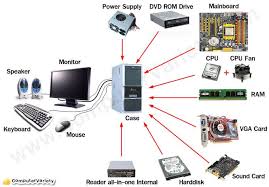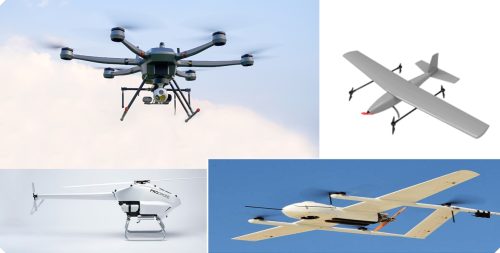The Ever-Evolving World of the Computer: Understanding User Intent and Navigating the Landscape
The computer has become an indispensable tool in modern life. From powering global industries to connecting individuals across continents, its impact is undeniable. But the word “computer” encompasses a vast spectrum, and understanding what users are actually searching for when they type that keyword is crucial for both providing relevant information and navigating the complex landscape of the tech world.

This article will delve into the nuances of user intent behind the search term “computer,” specifically focusing on how different modifiers like “computer parts” and “desktop computer parts” can reveal vastly different needs and expectations. We’ll explore what these searches signal, what kind of information users are looking for, and how businesses and content creators can tailor their offerings to meet those specific demands.
The Broad Scope of “Computer”: A Foundation of Understanding
The term “computer” itself is incredibly broad. It can refer to anything from a powerful gaming rig to a simple calculator. A user simply typing “computer” might be:
-
Looking for general information: What is a computer? How does it work? What are the different types of computers?
-
Considering purchasing a computer: Exploring different brands, models, and features.
-
Troubleshooting a problem: Seeking help with a technical issue or error message.
-
Looking for news and updates: Staying informed about the latest technological advancements.
-
Searching for educational resources: Accessing tutorials, online courses, or articles related to computer science.
To effectively cater to users searching for “computer,” it’s vital to understand the context behind their query. This is where analyzing keyword modifiers becomes essential.
Decoding “Computer Parts”: Seeking Expert Recommendations and Top-Rated Components
The addition of “parts” significantly narrows down the intent. When a user searches for “computer parts,” they’re typically looking for specific hardware components to build, upgrade, or repair a computer. This search signals a need for:
-
Information on specific components: Understanding the function, specifications, and compatibility of components like CPUs, GPUs, RAM, motherboards, storage devices (SSDs, HDDs), power supplies, and cooling solutions.
-
Recommendations and comparisons: Seeking advice on the best components for their specific needs and budget. They may be looking for “top-rated GPUs for gaming,” “best SSDs for video editing,” or “budget-friendly RAM for everyday use.”
-
Places to purchase components: Finding reputable retailers, online stores, or local shops that sell computer parts. They might be looking for “best deals on CPUs” or “computer parts store near me.”
-
DIY guides and tutorials: Accessing step-by-step instructions on how to install, replace, or upgrade computer parts.
This “computer parts” search intent reveals a more technically inclined user who is actively engaged in the process of building or modifying a computer. They are likely looking for expert advice, in-depth reviews, and detailed specifications to make informed decisions.
Meeting the Needs of the “Computer Parts” Seeker:
-
Comprehensive Product Information: Provide detailed specifications, compatibility information, and user reviews for each component.
-
Expert Recommendations and Comparisons: Offer curated lists of top-rated components for different use cases (gaming, content creation, general use).
-
DIY Guides and Tutorials: Create clear and concise guides on how to install, replace, and troubleshoot various computer parts.
-
Affiliate Marketing: Partner with reputable retailers to offer links to purchase recommended components.
-
Community Forums: Foster a community where users can ask questions, share their experiences, and receive help from experts.
Unpacking “Desktop Computer Parts”: A Focus on Well-being and Potentially “Organic” Options

The search term “desktop computer parts” adds another layer of specificity. While still related to hardware components, the inclusion of “desktop” implies a focus on parts specifically designed for desktop computers, excluding laptop or server components. This search can indicate:
-
A more general search for “Computer” Well-being: The use of “parts” in conjunction with “desktop computer” might point to a need for information that’s helpful for the overall well-being of the machine, rather than just a desire to upgrade or repair.
-
Troubleshooting Specific Issues: The user might be experiencing performance problems, overheating, or other issues with their desktop computer and is trying to identify the faulty part.
-
Maintenance and Optimization: They might be looking for information on how to clean, maintain, or optimize their desktop computer to improve its performance and longevity.
-
Potentially looking for “Organic” or Environmentally-Friendly Options: While not always the case, the desire for “well-being” of a desktop computer may include a search for ethically sourced or environmentally friendly computer parts.
Addressing the “Desktop Computer Parts” Search Intent:
-
Targeted Product Information: Focus on desktop-specific components and their compatibility with different desktop form factors (ATX, Micro-ATX, Mini-ITX).
-
Troubleshooting Guides: Provide detailed guides on how to diagnose and fix common problems with desktop computers, such as overheating, slow performance, and hardware failures.
-
Maintenance and Optimization Tips: Offer advice on how to clean, maintain, and optimize desktop computers to improve their performance and longevity. Include tips on software optimization, hardware cleaning, and cooling solutions.
-
Information on Environmentally Friendly Options: While it’s difficult to be 100% ‘organic’ with technology, offer resources related to companies focusing on sustainability and ethical sourcing of materials.
-
Build Guides with a Focus on Long-Term Reliability: Provide recommendations for building desktops with components that are known for their reliability and longevity.
Connecting the Dots: The User Journey and Content Strategy
Understanding the nuances of user intent allows for the creation of a more effective content strategy. Instead of simply targeting the broad keyword “computer,” focus on creating targeted content that addresses specific needs and interests.
For example:
-
Targeting “computer parts”: Create in-depth reviews of popular CPUs, GPUs, and RAM modules. Develop DIY guides on how to build a gaming PC. Offer comparison charts that highlight the key differences between different components.
-
Targeting “desktop computer parts”: Develop troubleshooting guides for common desktop computer problems. Provide tips on how to optimize desktop computer performance. Create a guide on how to clean and maintain a desktop computer.
By understanding the user journey and creating content that aligns with their specific needs, businesses and content creators can attract more qualified leads, build trust, and establish themselves as experts in the field.
Beyond the Keywords: Anticipating User Needs and Building a Holistic Experience
While keyword analysis is crucial, it’s important to look beyond the keywords themselves and anticipate the user’s underlying needs and goals.
-
Consider the user’s level of technical expertise: Tailor the content to their knowledge level, providing clear and concise explanations for beginners and more in-depth analysis for experienced users.
-
Anticipate follow-up questions: Address potential questions and concerns that users might have. For example, if someone is looking for “best GPU for gaming,” also provide information on power supply requirements and cooling solutions.
-
Create a holistic experience: Offer a range of resources, including articles, videos, tutorials, and community forums, to cater to different learning styles and preferences.
Conclusion: Embracing the Complexity of the “Computer” and User Intent
The world of the computer is constantly evolving, and understanding user intent is crucial for success. By analyzing keyword modifiers like “computer parts” and “desktop computer parts,” we can gain valuable insights into the needs and expectations of different user segments.
-
“Computer parts” signals a search for expert recommendations, top-rated components, and DIY guides.
-
“Desktop computer parts” indicates a general search for “computer” well-being, potentially looking for organic options and focusing on maintenance, troubleshooting, and optimization.
By creating targeted content that addresses these specific needs, businesses and content creators can attract more qualified leads, build trust, and establish themselves as experts in the field.
Ultimately, understanding and responding to user intent is not just about optimizing for search engines, but about providing valuable information and building a lasting relationship with your audience. As the computer continues to evolve and integrate into every aspect of our lives, a deep understanding of user needs will be more critical than ever. Continuously learning and adapting to the evolving digital landscape will be a crucial element to success. Therefore, by understanding the various signals behind user intent and providing the right solution, you create a meaningful experience with a computer.









